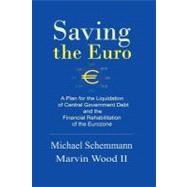- ISBN: 9781453612941 | 1453612947
- Cover: Paperback
- Copyright: 6/4/2010
The key elements of the plan are: to (1) monetize the central governments's debts; (2) raise banks's minimum reserve requirements on deposits up to 100% giving all deposts a 100% federal funds backing; (3) divide banks in deposit taking and into lending institutions; (4) disband deposit insurance corporations. Austerity programs, crippling the economy, are both, unnecessary and misconceived to rectify an anomaly, namely the government's inability to fund itself by way of its constitutional money power, which was given to private commercial banks for nothing in return but grief. Money-creation is a rather mundane, banal and arbitrary way of conceiving and coining claims on resources. Euros are created by way of Luca Pacioli's (1494) double-entry bookkeeping by entities holding a banking license - ? 11 trillion. Only central bank money is legal tender, but it, too, is created by the ECB and the Eurozone's central banks in the same way: a "process so simple that the mind is repelled" (J.K. Galbraith, 1975. "Money. Whence It Came. Where It Went."). The nations' constitutions give the legislative power over money and banking to their parliaments, where it lies unused, allowing private banks to create the nations' money supply by double-entry bookkeeping out of nothing, monetizing trillions of government and private debt at interest. The anomaly can easily be reversed by the same bookkeeping that created it; namely, by paying off (redeeming) the governments' debts with the central banks' legal tender, without increasing the money supply and its inflationary effects, by restricting the use of the 'redemption receipts' for transfer to the deposit-taking banks' equity capital accounts, while simultaneously raising minimum reserve requirements on bank deposits at the central banks to levels that mop up any excess liquidity otherwise created by the redemption of the government debts.






